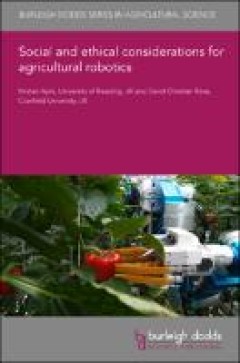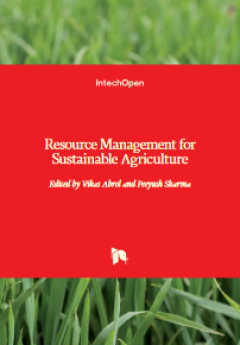Ditapis dengan

Social and Ethical Considerations for Agricultural Robotics
Penskalaan robotika pertanian dapat membantu kita mencapai transisi pertanian berkelanjutan di seluruh dunia, memecahkan tantangan produksi, lingkungan, dan sosial-politik. Namun, ada aspek sosial dan etika yang perlu dipertimbangkan sebelum menempuh jalan menuju pengembangan dan implementasi. Bab ini menggunakan kerangka kerja inovasi yang bertanggung jawab untuk mengantisipasi kemungkinan tan…
- Edisi
- -
- ISBN/ISSN
- 978-1-80146-277-8
- Deskripsi Fisik
- 18 hlm.
- Judul Seri
- -
- No. Panggil
- -

Altering Crop Management Practices to Promote Pollinators
Agricultural intensification, or the increase in crop production per unit of input or land area to meet the needs of a growing population, has resulted in a landscape dominated by large scale monoculture cropping. Pollinators, specifically, are impacted by the lack of diverse floral and habitat resources associated with this type of farming. Agriculture must develop practices that diversify the…
- Edisi
- -
- ISBN/ISSN
- 978-1-80146-098-9
- Deskripsi Fisik
- 23 hlm.
- Judul Seri
- -
- No. Panggil
- -

Management of Organic Soils to Reduce Soil Organic Carbon Losses
Organic soils of intact peatlands store 1/4 of the global soil organic carbon (SOC). Despite being an important source of methane (CH4), they are climate coolers because they continuously accumulate new organic carbon. However, when these organic soils are drained for agriculture, the resulting aerobic conditions lead to fast decomposition of the peat and the release of carbon dioxide (CO2) and…
- Edisi
- -
- ISBN/ISSN
- 978-1-80146-324-9
- Deskripsi Fisik
- 65 hlm.
- Judul Seri
- -
- No. Panggil
- -

Smart Management of Conservative, Organic and Integrated Agriculture
Sustainable agriculture aims to achieve the goal of food security, also maximizing the socio-economic benefits, and minimizing environmental drawbacks. Farming systems mostly relying on ecological processes and the reduced application of external inputs (fertilizers and pesticides), such as organic farming and integrated farming, can even contribute to the mitigation of global warming and of th…
- Edisi
- -
- ISBN/ISSN
- 978-3-03936-987-4
- Deskripsi Fisik
- 184 hlm.
- Judul Seri
- -
- No. Panggil
- -

Resource Management for Sustainable Agriculture
In this book, papers pertaining to resource management for sustainable agricultural development are presented in four parts divided into ten chapters. Part I discusses the usage of water and waste management for sustainable agricultural development including aspects like irrigation management to prevent soil and ground water salinization, production of solid fuel from oil palm waste, sustainabl…
- Edisi
- -
- ISBN/ISSN
- 978-953-51-5334-4
- Deskripsi Fisik
- 308 hlm.
- Judul Seri
- -
- No. Panggil
- -
 Karya Umum
Karya Umum  Filsafat
Filsafat  Agama
Agama  Ilmu-ilmu Sosial
Ilmu-ilmu Sosial  Bahasa
Bahasa  Ilmu-ilmu Murni
Ilmu-ilmu Murni  Ilmu-ilmu Terapan
Ilmu-ilmu Terapan  Kesenian, Hiburan, dan Olahraga
Kesenian, Hiburan, dan Olahraga  Kesusastraan
Kesusastraan  Geografi dan Sejarah
Geografi dan Sejarah